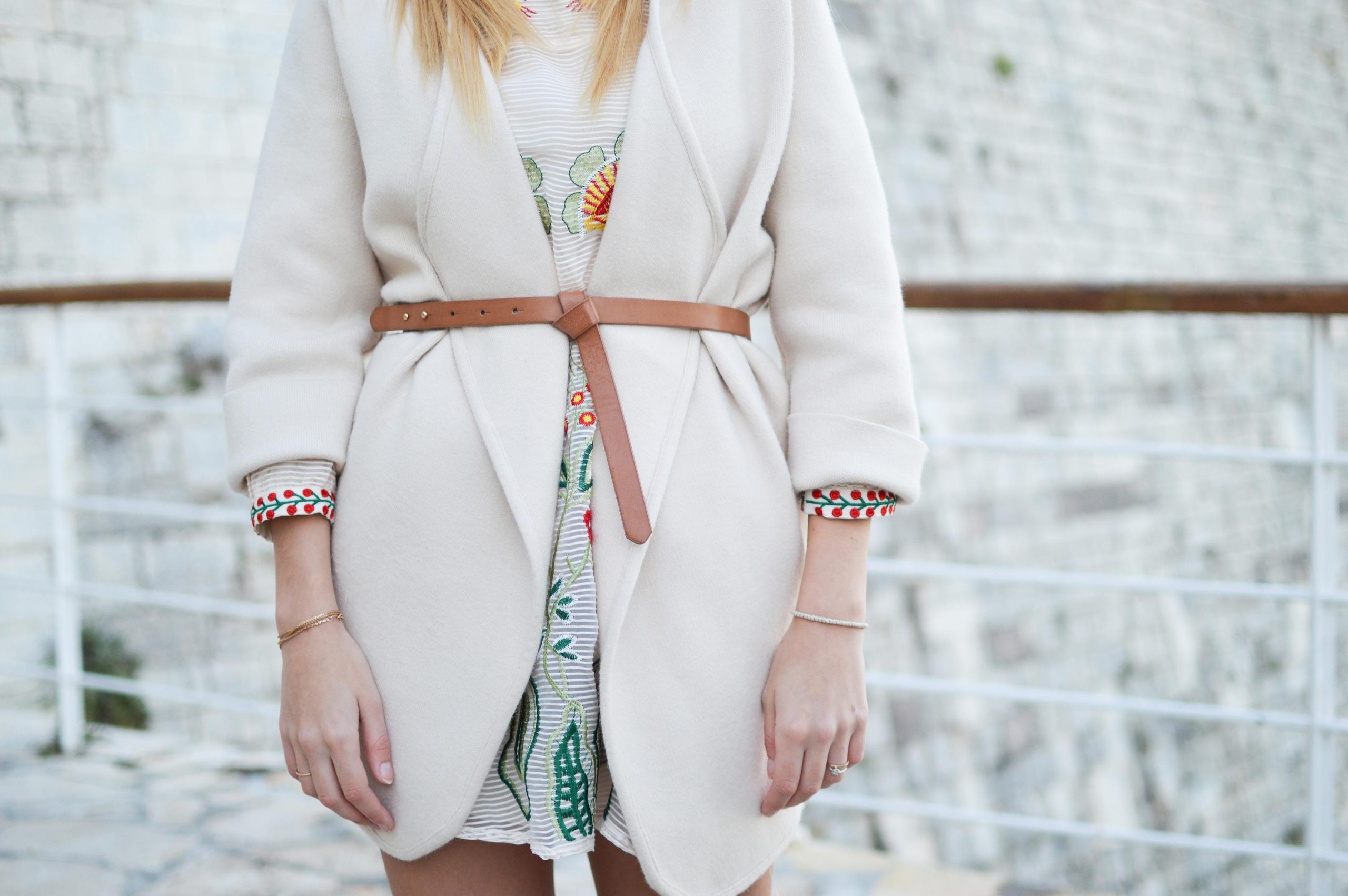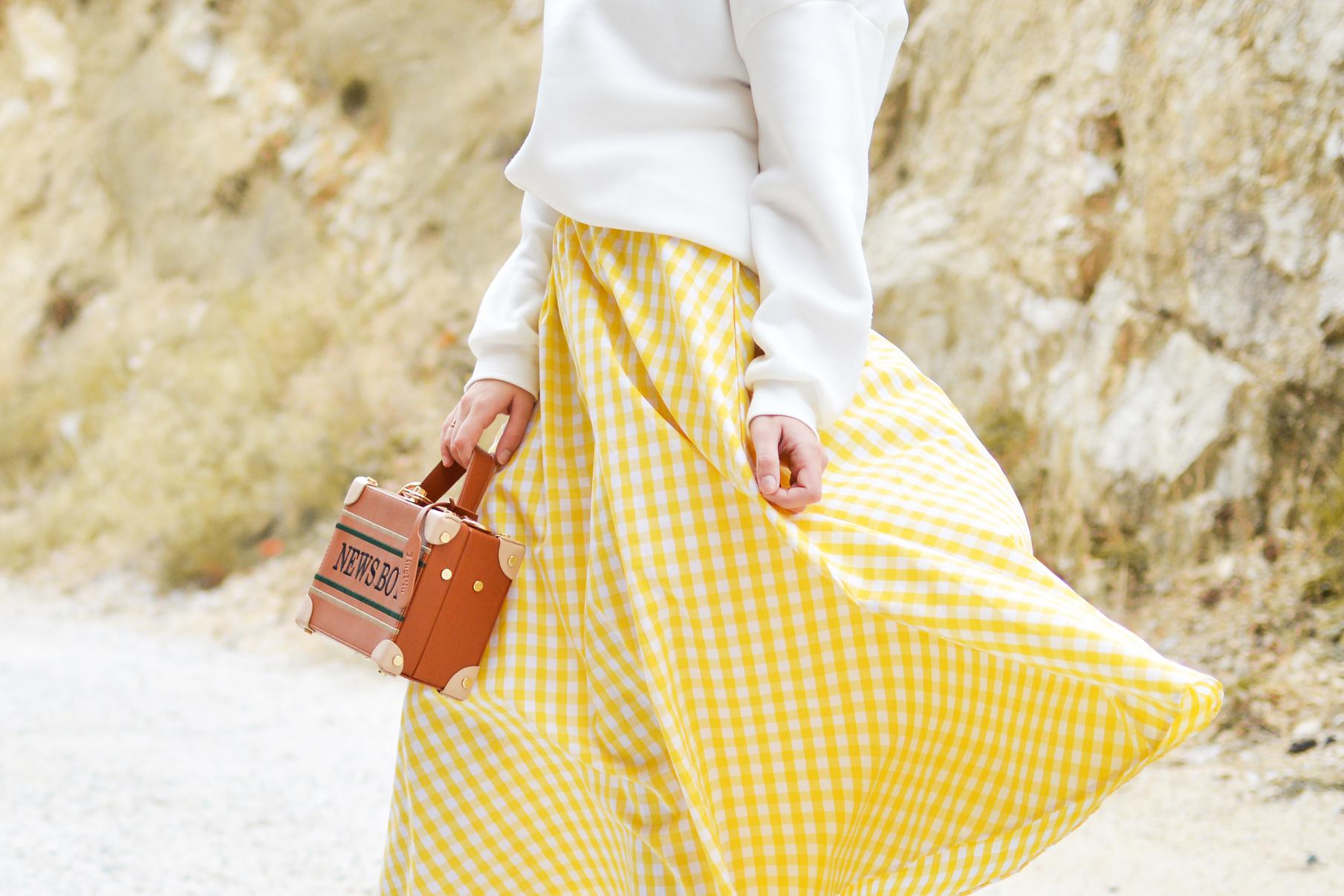The world of fashion has undergone remarkable transformations over the years, but none so exciting as the evolution of children’s fashion. Kids today have an incredible array of styles, patterns, and designs to choose from, which is a far cry from the limited options available a few decades ago. The rise of trendy and sustainable clothing lines has given parents and children endless choices, from contemporary minimalist and streetwear-inspired clothing to gender neutral designs that challenge the traditional pink-blue binary.
In this blog, we will explore the fascinating history and innovative trends shaping the evolution of children’s fashion and how it has become a significant market in the fashion industry.
Early History of Children’s Fashion
The history of children’s fashion can be traced back to ancient times. In many cultures, children’s clothing was simply a smaller version of adult clothing.
However, around the 18th century, children’s clothing began to be tailored specifically for them. It wasn’t until the mid-19th century that the concept of creating clothing for children that was comfortable, practical and stylish, emerged. This was all thanks to historical figures like Queen Victoria and her influence on Victorian fashion.
The children of the wealthy aristocracy began to wear clothing that was more elaborate and stylish than ever before. Thus began a new era of children’s fashion that would continue to evolve over the years.

Overview of children’s clothing in ancient times
In ancient times, children’s clothing served a more practical purpose than a fashionable one. Many cultures dressed their children in simple and practical clothing that allowed them to move around freely. In some cultures, children wore amulets and talismans to protect them from evil spirits.
As children grew older, they would then start wearing clothing that aligned with their status in society, such as robes or tunics for the wealthy or simple dresses for the less privileged. It wasn’t until the 18th century that clothing started to be designed specifically for children, signaling a new era of children’s fashion.
How children’s fashion has evolved through the Middle Ages
During the Middle Ages, children’s clothing became more elaborate as a symbol of wealth and social status. Boys wore tunics and breeches while girls wore long dresses and head coverings.
However, the clothes were still restrictive and uncomfortable for children. It wasn’t until the Renaissance period that children’s clothing started to incorporate more comfort and practicality, with the use of softer fabrics and looser fits. By the 19th century, children’s clothing became more gender-specific with the rise of pastel colors for girls and darker colors for boys.
The introduction of sewing machines also made it easier to produce and distribute children’s clothing on a larger scale.
Influence of colonialism on early modern children’s fashion
Colonialism greatly influenced early modern children’s fashion through the introduction of new materials and styles. European colonizers brought fabrics such as denim, cotton, and silk to other parts of the world, which were then used to create clothing for children.
Additionally, the mixing of cultures led to the adoption of new styles and clothing traditions. For example, in India, the combination of Indian and British styles created the now-iconic Nehru collared shirt for boys.
However, colonialism also had negative effects on children’s fashion as it often perpetuated Western standards of beauty and imposed conservative dress codes on colonized populations.
Modern-day children’s fashion trends
Today, children’s fashion has become a booming industry with new trends emerging every season. Parents are looking for comfortable and functional clothing that also reflects their own personal style and values.
The rise of social media has also influenced children’s fashion, with Instagram influencers and celebrity children setting trends.
Sustainable and eco-friendly fashion has also gained popularity, with parents opting for clothing made from organic materials.
Overall, the evolution of children’s fashion shows how societal values and cultural trends have influenced the way children dress over time.
20th Century Developments in Children’s Fashion
In the 20th century, children’s fashion saw significant developments as societal values, and technological advancements played a role in shaping the way children dressed. During World War II, rationing led to clothing shortages, and children’s clothing became more practical and utilitarian. The 1950s saw the rise of rockabilly fashion and the adoption of Western wear by children.
In the 1960s, children’s fashion became more colorful and playful, inspired by the mod and hippie fashion movements. The 1970s saw the advent of gender-neutral clothing, with boys and girls dressing in similar styles.
The 1980s were all about bold colors and statement-making accessories like neon scrunchies and jelly shoes. In the 1990s, grunge and alternative fashion influenced children’s clothing, with flannel shirts, Dr. Martens boots, and oversized sweaters becoming popular.
Today, children’s fashion embraces diversity, inclusivity, and self-expression, with a range of styles and options available for every child.

The impact of social and economic changes on children’s fashion in the 1900s
In the 20th century, social and economic changes greatly impacted children’s fashion. The war and rationing led to practical and utilitarian clothing being adopted.
The advent of rockabilly and Western wear in the 1950s was a reflection of the growing popularity of music and film culture. Gender-neutral clothing in the 1970s was a reflection of the growing feminist and civil rights movements. The colorful and playful mod and hippie-inspired fashion of the 1960s was in response to the changing attitudes of the youth of that time.
The bold colors, statement accessories, and grunge influences in the 1980s and 1990s reflected the changing music and cultural landscapes. Today, fashion for children is all about inclusivity, diversity, and self-expression, with a range of styles available for every child.
Rise of brand name fashion for children in the mid20th century
During the mid-20th century, the rise of brand name fashion for children became prevalent. Clothing manufacturers began focusing on creating clothing lines specifically for children, making it easier for parents to find trendy and fashionable outfits for their kids. The introduction of marketing and advertising targeted towards children increased consumer demand for brand name fashion, making it a booming industry.
Today, brand name fashion for children is still popular, with designer clothing lines specifically for children featuring high-end styles. However, there is also a growing trend towards sustainable and ethical fashion options for children, promoting a more responsible approach to fashion consumption and production.
Influence of pop culture and media on children’s fashion
Pop culture and media play a significant role in shaping children’s fashion. Movies, TV shows, and celebrity attire often influence what children want to wear.
For example, the iconic pink dress worn by Audrey Hepburn in “Breakfast at Tiffany’s” inspired countless imitations and became a symbol of class and sophistication. Likewise, costumes from superhero movies and TV shows have become incredibly popular among children, influencing trends in sportswear and superhero-themed clothing.
In addition, social media has made it easier for children to connect with one another and share their fashion choices.
Platforms like Instagram and TikTok have given rise to a new generation of “influencers” who set trends and influence children’s fashion choices.
Breaking gender stereotypes in children’s fashion
Over the years, children’s fashion has undergone a significant shift in terms of what is considered appropriate for boys and girls.
Traditional gender roles and expectations have given way to a more inclusive approach, with many clothing lines featuring unisex designs and gender-neutral clothing. Children’s clothing has become more colorful, versatile, and playful, with an emphasis on individual expression rather than adherence to societal norms.
The evolution of children’s fashion reflects changing cultural attitudes towards gender and identity, emphasizing self-expression and diversity.
As we celebrate the diversity of children’s fashion options, let us also remember the importance of sustainability and responsible consumption in the fashion industry.
Contemporary Trends in Children’s Fashion
In recent years, children’s fashion has taken on a more modern and sophisticated approach. One of the key trends is a focus on comfort and practicality, with many clothing lines featuring high-quality materials and easy-to-wear designs.
Bright, bold colors and prints are also popular among children’s fashion designers, with many incorporating artistic and imaginative designs into their clothing lines. Retro styles from the 90s have also made a comeback, featuring oversized clothing and playful accessories.
Moreover, sustainable fashion has become an essential consideration in the children’s fashion industry, with many brands committing to eco-friendly materials and ethical production practices.
As we move towards a more conscious and sustainable future, we can expect to see more environmentally-friendly options in children’s fashion.
Overall, the evolution of children’s fashion demonstrates a shift towards inclusivity, self-expression, and sustainability. With the influence of pop culture, changing societal values, and contemporary trends, children’s fashion continues to evolve and inspire creativity and individuality.

Shift toward more sustainable and ecofriendly clothing options for children
As mentioned earlier, the evolution of fashion has brought about a more significant focus on sustainability. As many consumers become more conscious of the impact of their choices on the environment, more designers are taking note and embracing eco-friendly practices in their production processes.
In the children’s fashion industry, this trend is evident in the increasing popularity of sustainable and ethical clothing options. Parents are seeking out clothing made from organic or recycled materials, and brands are responding by creating eco-conscious collections. This shift towards sustainability not only benefits the planet but also promotes social responsibility and encourages children to take an active role in caring for our planet.
The growing trend of genderneutral clothing
Another significant shift in children’s fashion is the growing trend towards gender-neutral clothing. Gender stereotypes in clothing have long been a controversial issue, with many arguing that gender stereotyping can limit children’s self-expression and creativity.
In recent years, more brands have embraced the concept of gender-neutral clothing, creating designs that can be worn by both boys and girls.
This trend has become more mainstream, and parents are actively seeking out gender-neutral options for their children. By removing traditional gender roles and allowing children to wear whatever they feel comfortable in, these clothing lines promote inclusivity and support children’s individuality.
The rise of technology in children’s fashion
The evolution of children’s fashion has not been limited to sustainability and gender-neutral clothing. Over the past few years, technology has begun to play a more significant role in the industry.
From clothing that incorporates tech components like LEDs or built-in activity trackers to apparel that can change color based on environmental factors, technology is changing the way we think about clothing. This trend is particularly prevalent in sportswear and activewear lines, where performance-enhancing features are becoming increasingly common.
The incorporation of technology in children’s clothing not only adds a fun and interactive element but also enhances functionality, making it more comfortable and convenient for kids to wear their clothes.
Influence of social media and influencers on children’s fashion
Social media has been a game-changer for the fashion industry, and children’s fashion is no exception. Social media influencers and kid fashion bloggers have gained massive followings and have become powerful players in the industry.
Parents now have access to an array of fashion inspiration and ideas for their little ones by scrolling through their Instagram feeds or watching YouTube videos.
Many brands are also teaming up with social media influencers to collaborate on collections and product launches, which generates buzz and promotes their brand to a wider audience.
This influence has led to a rise in children’s clothing that reflects current fashion trends and styles, demonstrating how social media is shaping the future of children’s fashion.
Children’s Fashion Globalization
One of the most fascinating aspects of the evolution of children’s fashion is its globalization. With the world becoming more connected than ever, it’s no surprise that fashion trends are being shared across borders.
Kids from different parts of the globe can now be seen sporting similar styles and trends, thanks to the ease of access to information and cross-cultural sharing on social media.
But globalization is not just about adopting Western fashion trends; it’s also about showcasing traditional styles and fabrics from different countries and cultures.
As a result, children’s fashion has become more diverse, colorful, and dynamic, reflecting the world’s rich cultural heritage.
Sustainability and Eco-Friendly Fashion
Another critical trend in the evolution of children’s fashion is the shift towards sustainability and eco-friendliness.
With growing awareness and concern about the environment, consumers are becoming more conscious of their purchasing decisions.
Many parents are now seeking out clothes made from organic and natural materials, free from harsh chemicals and dyes.
Brands are also making a conscious effort to reduce waste and promote sustainable fashion practices by using recycled materials and producing clothes that can be worn for more extended periods.
The evolution of children’s fashion has come a long way, with new trends and styles emerging regularly.
From social media influence to sustainability, the future of children’s fashion looks bright, exciting, and environmentally responsible.

The emergence of global children’s fashion brands and trends
In recent years, we’ve seen the emergence of global children’s fashion brands and trends. Brands like Zara Kids, Gap, and H&M are now household names, and their styles and designs can be seen on children all over the world.
These brands have made it easier for parents to access the latest fashion trends for their kids, regardless of where they live.
Moreover, social media has played a significant role in the rise of these global brands, with influencers and celebrities sharing their children’s fashion choices with a massive audience.
The growing influence of these global brands has ushered in a new era of children’s fashion, where style and comfort go hand in hand.
As fashion continues to evolve, we can expect to see more innovative designs, eco-friendly materials, and unique global trends that break down cultural barriers and unite us all.
Influence of cultural diversity on children’s fashion
Cultural diversity has also had a significant impact on children’s fashion, with designers drawing inspiration from different parts of the world to create unique and eclectic designs.
From vibrant African prints to intricate Indian embroidery and colorful Latin American textiles, children’s fashion has become a melting pot of different cultures and traditions.
Parents are now seeking out clothing that celebrates their cultural heritage or blends different traditions to create a more inclusive wardrobe for their children.
Globalization has made it easier for designers to incorporate different cultural elements into their designs, leading to more vibrant and diverse fashion choices for kids.
The future of children’s fashion
As we look towards the future, it’s clear that children’s fashion will continue to evolve, driven by technological advancements, changing cultural values, and shifting consumer preferences.
We can expect to see more sustainable and eco-friendly materials, gender-neutral designs, and even wearable technology that enhances both style and functionality.
Ultimately, the evolution of children’s fashion reflects our changing world, as we seek to create a more inclusive, sustainable, and connected future for our children.
The impact of globalization on traditional clothing styles
Globalization has not only influenced the incorporation of different cultural elements into children’s fashion, but it has also impacted traditional clothing styles. With the rise of fast fashion and mass production, traditional clothing styles that were once handmade and unique to specific regions are now being replicated and sold for lower prices. This has led to a loss of cultural identity and authenticity in some traditional clothing styles.
However, there is also a growing movement to preserve and promote traditional clothing, with designers and consumers alike recognizing the value of cultural heritage and craftsmanship. As children’s fashion continues to evolve, it’s important to strike a balance between incorporating cultural diversity while also preserving traditional clothing styles.
Trends in crosscultural children’s fashion
The blending of cultural elements and styles has become a popular trend in children’s fashion. From incorporating traditional textiles and prints to using cultural motifs in modern designs, crosscultural fashion celebrates diversity and promotes inclusivity.
Brands and designers are also collaborating with artisans and local communities, providing economic opportunities and promoting sustainable fashion practices.
Another trend is gender-neutral clothing, which challenges traditional gender expectations. This trend promotes equality and empowers children to express themselves freely without being limited by societal norms.
Furthermore, sustainable and environmentally friendly fashion practices have also gained momentum in the children’s fashion industry. Consumers are becoming more mindful of the impact of their purchasing habits and are advocating for ethical and eco-conscious fashion choices.
Conclusion
The evolution of children’s fashion has been influenced by various cultural, social, and economic factors. From the globalization of fashion to the promotion of cultural diversity and sustainability, children’s fashion reflects the changing times and consumer preferences. As the industry continues to grow and evolve, it’s crucial to preserve the cultural heritage and authenticity of traditional clothing styles, while also embracing new ideas and designs.
Note The above outline is only for article generation purpose, the final article may contain additional points as per the need of the article.
The fashion industry has come a long way in terms of children’s fashion, and there’s no denying that trends have evolved since the inception of children’s clothing. One of the most noteworthy trends has been the blending of cultural elements and styles.
Crosscultural fashion has become increasingly popular, thanks to incorporating traditional textiles and prints, and the use of cultural motifs in modern designs. This trend promotes diversity and inclusivity, with brands collaborating with artisans and local communities to support economic opportunities and sustainable fashion practices. Gender-neutral clothing is another trend challenging traditional gender expectations, promoting equality.
Empowering children to express themselves freely without being limited by societal norms enables them to develop their identities on their own terms. The trend towards sustainable and environmentally friendly fashion practices is also gaining momentum in the children’s fashion industry. Consumers are becoming more mindful of their purchasing choices, promoting ethical and eco-conscious fashion choices.
It’s essential to preserve the cultural heritage and authenticity of traditional clothing styles while exploring new and innovative ideas and designs. The evolution of children’s fashion is influenced by a variety of factors, including globalization, cultural diversity, sustainability, and consumer preferences.
As the industry continues to grow and evolve, it’s important to keep these trends in mind, supporting children’s fashion that promotes diversity, inclusivity, and sustainability.
The evolution of children’s fashion has come a long way over the years. From the early 1900s when children primarily dressed in miniature versions of adult clothing to today’s colorful and playful styles, children’s fashion has undergone a significant transformation. Today, children’s fashion is greatly influenced by trends and pop culture, with a focus on comfort and practicality while still being stylish.
The variety of options available ensures that children can express themselves through their clothing at any age.










